As India tackles its second wave of COVID-19 infections, the country is struggling with oxygen shortages again. It experienced a shortage in September 2020, when the number of cases peaked in its first wave of infections.
The South Asian nation recorded another 2,624 deaths, a new daily record, taking its death toll to nearly 190,000. It has the world's second-highest number of cases – 16.5 million.
READ NOW
What is going on between Czechia and Russia?
Earth Day revised: A year of firsts
Who is Germany's potential Green chancellor?
What is the crisis?
India is struggling to transport large quantities of medical oxygen to hospitals in its capital New Delhi and other areas hit hard by a record number of cases of COVID-19.
The main problem is that medical oxygen is not reaching hospital beds in time.
03:05
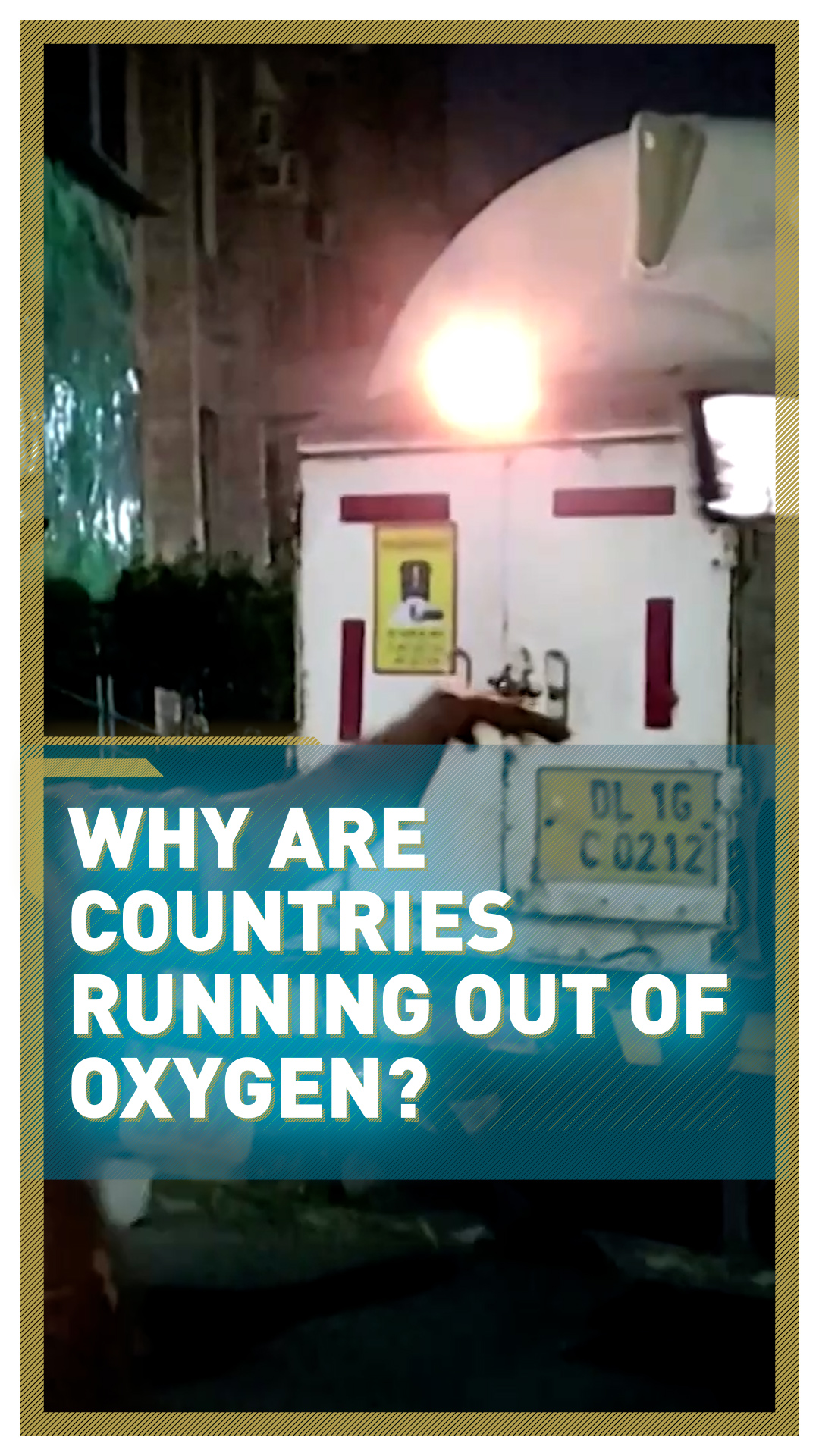
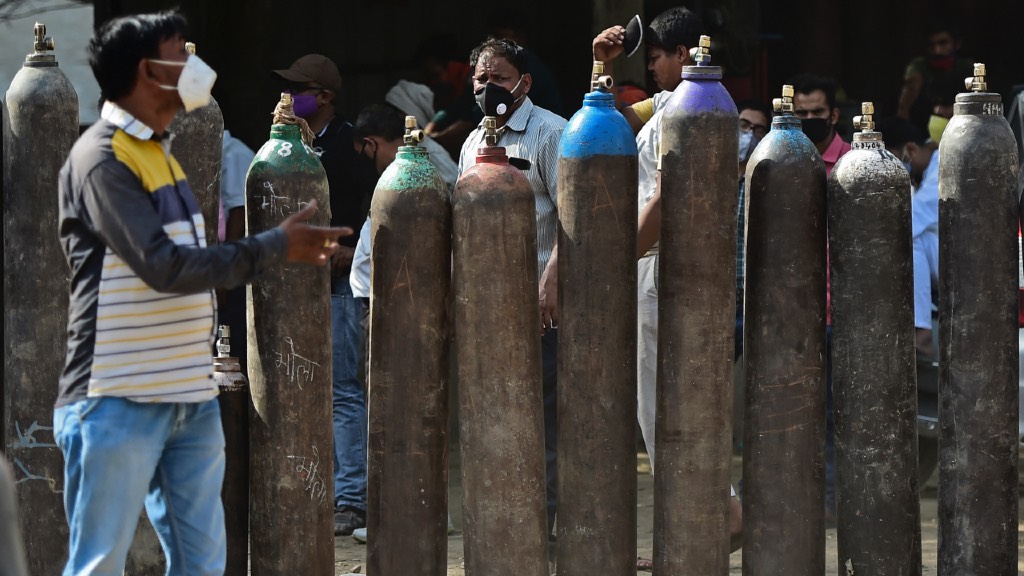
Given the hazardous nature of the substance, all liquid oxygen must be transported in a limited number of specialised tankers. /Sanjay Kanojia/AFP
Given the hazardous nature of the substance, all liquid oxygen must be transported in a limited number of specialised tankers. /Sanjay Kanojia/AFP
There are several factors that are causing a delay – including the location of production units, a stretched distribution network, and what critics have said is bad planning. Several hospitals in Delhi, which has no significant oxygen production capacity, made frantic public calls this week seeking emergency supplies.
With COVID-19 cases also swamping its neighboring states like Haryana and Uttar Pradesh, oxygen facilities there are overstretched as they are attempting to meet local demand.
To fulfil Delhi's current needs, additional medical oxygen now has to be transported from industrial zones in eastern India. A major private hospital chain in the capital, Max Hospital, tweeted that one of its facilities had one hour's oxygen supply left and had been waiting for replenishment since early morning.
Where are the shortages?
Maharashtra and Gujarat in the west, Haryana in the north and Madhya Pradesh in central India are all facing shortages. The northern state of Uttar Pradesh is also struggling.
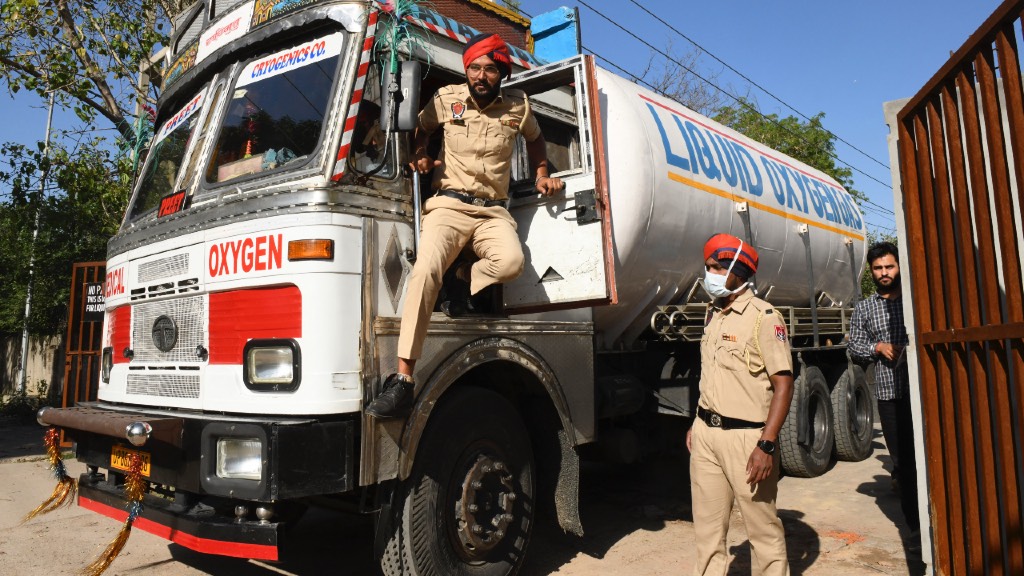
Tanks of oxygen are being shuttled across the country to hotspots to keep up with the demand. /Narinder Nanu/AFP
Tanks of oxygen are being shuttled across the country to hotspots to keep up with the demand. /Narinder Nanu/AFP
Why are oxygen deliveries getting delayed?
The facilities from which Delhi will now receive oxygen are spread across seven states, some more than 1,000 kilometers away, according to a court document.
Given the hazardous nature of the substance, all liquid oxygen must be transported in a limited number of specialized tankers, requiring advance planning to ensure deliveries are made on time, a gas industry source told Reuters news agency.
In recent days, amid a worsening scramble among states for oxygen, local officials in some regions disrupted movement of tankers in a bid to keep supplies for themselves. In part due to such blockades, Delhi only received about 177 tonnes of oxygen on Wednesday against its allocation of 378 tonnes, an official said.
But the industry source said that Delhi had also dragged its feet on planning ahead, without factoring in the time it takes to move oxygen cross-country by road.
"This problem wouldn't have happened if they had acted two to three weeks ago," the source said. Delhi's government did not respond to questions about the planning.
Which other countries have experienced a shortage?
Earlier this year, Manaus, the biggest city of Brazil's Amazonas state, ran out of oxygen. Even Sao Paulo, Brazil's richest city, suffered oxygen shortages.
The World Health Organization says $1.6 billion must be raised to tackle global shortages of oxygen to save lives from COVID-19 in poorer countries.
It launched a COVID-19 Oxygen Emergency Taskforce in February 2021. Taskforce partners will work together to measure oxygen demand, work with financing partners, and secure oxygen supplies and technical support for the worst-affected countries.
Mexico, Peru, Nigeria and South Africa have all suffered avoidable deaths.
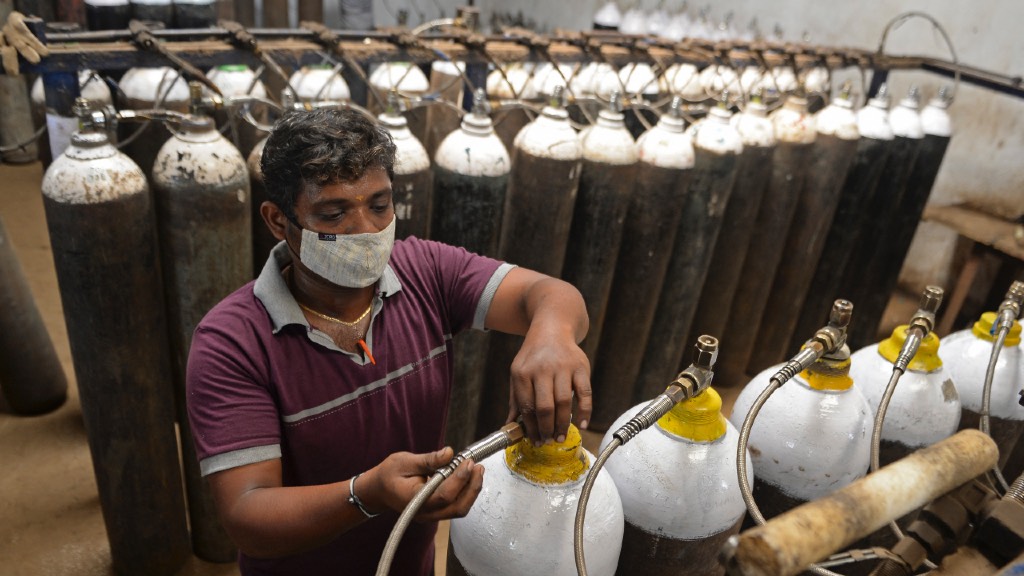
India has ramped up its oxygen production to meet the growing demand. /Arun Sankar/AFP
India has ramped up its oxygen production to meet the growing demand. /Arun Sankar/AFP
Are India's oxygen supplies enough?
India has a daily production capacity of at least 7,100 tonnes of oxygen, including for industrial use, which appears to be enough to meet current demand.
The country's healthcare facilities consume about 15 percent of oxygen supply. But now nearly 90 percent of its oxygen supply – 7,500 metric tonnes daily – is required for medical use.
This week, the government allocated 6,822 tonnes of liquid oxygen per day to 20 of the country's worst-affected states, compared to their combined demand of 6,785 tonnes, according to Prime Minister Narendra Modi's office.
India's total medical oxygen demand was just 3,842 tonnes as of April 12, as the surge in cases really took hold. States are typically allocated supplies by an inter-ministerial group of bureaucrats mandated to monitor and facilitate the flow of essential medical kit during the pandemic.
Modi's office has noted that the availability of liquid medical oxygen had increased by about 3,300 tonnes in the past few days, with steel plants and other industrial units diverting their production.
What is being done to solve the crisis?
The government started running "Oxygen Express" trains with tankers to meet the shortage at hospitals, Railroad Minister Piyush Goyal said.
Richer nations are helping to secure oxygen supplies. The Indian defense ministry is airlifting 23 mobile oxygen generation plants from Germany. Each plant will be able to produce 2,400 liters of oxygen per hour.
France's gas giant Air Liquide SA has diverted supplies from its industrial clients to India's hospitals. China and Russia are also offering to help.
The air force also airlifted oxygen tanks and other equipment to areas where they were needed, and flew doctors and nurses to New Delhi, said the government. Refilled oxygen tankers will then move back by road.
"We have surplus oxygen at plants which are far off from places where it is needed right now. Trucking oxygen is a challenge from these plants," said Saket Tiku, president of the All India Industrial Gases Manufacturers Association.
"We have ramped up the production as oxygen consumption is rising through the roof. But we have limitations and the biggest challenge right now is transporting it to where it's urgently needed," he added.
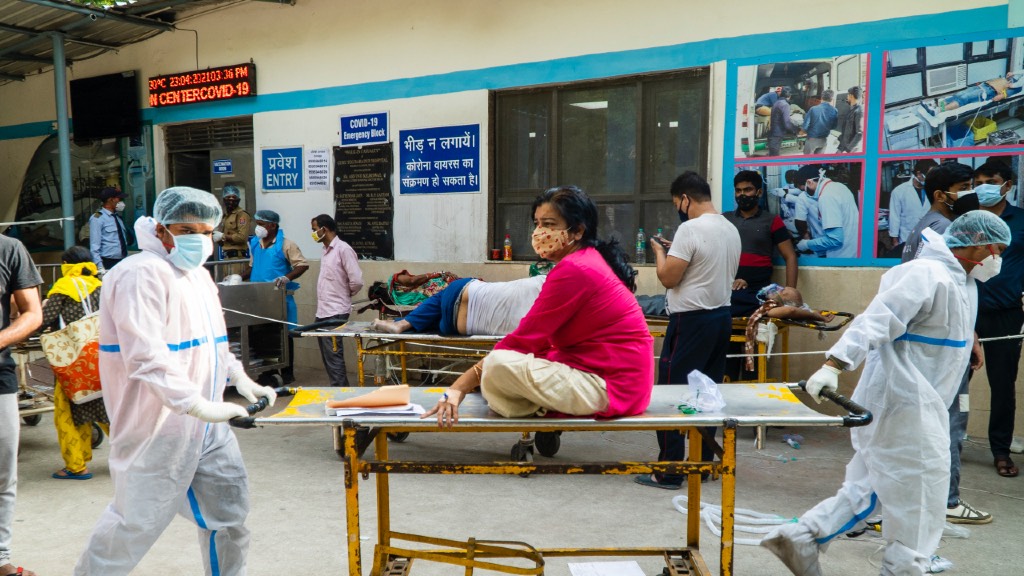
India has the world's second-highest number of cases – 16.5 million. /Maude Brulard/AFP
India has the world's second-highest number of cases – 16.5 million. /Maude Brulard/AFP
The Supreme Court told the government on Thursday that it wanted a "national plan" for the supply of oxygen and essential drugs for the treatment of coronavirus patients.
Several other industries are offering oxygen to hospitals, while salt-to-software conglomerate Tata Group is importing 24 specialized containers to transport liquid oxygen.
The government has issued orders to convert argon and nitrogen tankers into oxygen ones.
What can be done to stop it from happening again?
A year ago, India was able to avoid the shortages of medical oxygen that plagued Latin America and Africa after it converted industrial oxygen manufacturing systems into a medical-grade network.
But many facilities went back to supplying oxygen to industries and now several Indian states face such shortages that the health ministry has urged hospitals to implement rationing.
The government in October began building new plants to produce medical oxygen, but now, some six months later, it remains unclear whether any have come online. The health ministry says they were being "closely reviewed for early completion."
Tanks of oxygen are being shuttled across the country to hotspots to keep up with the demand, and several state governments have alleged that many have been intercepted by other states to be used for their needs.
And as some experts predict a trebling of daily infections in a few weeks, India will have to dramatically ramp up both oxygen production and distribution systems, both will require effective planning.
Video Editing: James Sandifer
Source(s): AP
,Reuters

